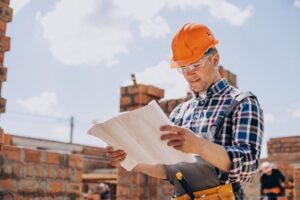What to Know Before You Build in Arizona
There are some home buyers who do not want to inherit other people’s problems.
When this is the case, a new construction home in Arizona makes sense. It gives homeowners the opportunity to build the proverbial “dream house.”
However, you can’t just start hammering away. Unless you are independently wealthy, a custom home build will require a new construction loan.
A new construction loan is a special kind of loan that covers the cost of land purchase, construction materials, labor, permits, and other expenses incurred when building a home from the ground up.
If you are considering a custom build in Arizona as either a primary residence or investment, keep reading as we explore new construction loans from all angles and how you can increase your chances for the most favorable build possible.
Get Pre-Approved
It is crucial to get pre-qualified before ever applying for a new construction loan. It will give you an idea of how much you can borrow for a project. If you plan on building a luxury home with next-level amenities, fire resistant roofing, and marble countertops but can only pre-qualify for a fraction of the construction costs, then you will save a lot of money not paying for architect consultations and blueprints that will never see the light of day.
To give yourself the best chance of a favorable pre-approval, work to build your credit score, save as much as possible for a down payment, and stay realistic on the budget you set.
Find a Licensed Builder
After you get pre-approved, your lender will want to know that you are partnering with a builder with the proper expertise to complete the build. Not only should your builder be licensed, bonded, insured, and up-to-date on the latest home and deck building codes, but it is critical that they have adequate bandwidth and reputation to complete the project. Horror stories abound of new construction homes sitting in purgatory–with lenders cutting off financing–as the builder falls behind or turns their attention to more lucrative projects.
Referrals from friends and family are usually recommended when choosing a builder. If people you are close with are happy with their new construction home, chances are you will have a similar experience. However, if you do not have any referral prospects or simply want to do more research, the National Association of Home Builders offers a comprehensive list of qualified contractors in your area.
Collect All Necessary Documents
This is where the rubber hits the road. There is a comprehensive list of documents a lender will want to see prior to approving financing on construction. Some of the most pertinent items include:
- A contract with your builder with detailed plans and pricing for the project
- References for your builder and proof of their licenses
- Pay stubs, tax statements, assets, employment, and any other proof of income
- A timeline for when you plan on completing the project
These are just some of the various documents that a lender may want to see, so be sure to check with your specific financial institution and get all of the necessary paperwork they require to make your loan application complete.
Obtain Homeowners’ Insurance
Even though it is impossible to live in a home that is not yet built, most lenders will want a prepaid homeowners’ insurance policy in place that includes builder’s risk coverage. This will protect you–and your lender–if something happens to the partially-built home (fire, hail, vandalism, etc.). In many cases, material selection can have an impact on homeowners’ premiums. Compare different types of housewrap, denim insulation vs fiberglass, and engineered cladding products to see if they can improve your insurance quote without significantly increasing the amount you need to finance.
Initial Draw and Construction
After the loan is approved and you’ve agreed to terms, you can begin drawing on the loan. The initial draw is often used to cover the cost of land that is not already owned and the starting construction costs to get the project underway. As the project progresses, subsequent draws can be made based on completion milestones. Throughout the process, the lender will conduct regular inspections to ensure that the project is compliant with project plans.
Transition to Permanent Financing
After the home is complete, the new construction loan will transition to a permanent mortgage. This is typically a “construction-to-permanent” situation, in which the cost of the construction loan is included in the standard 15- or 30-year mortgage commonly used in home transactions. The benefit of this approach is a single set of closing costs, which can save you thousands of dollars.
In some cases, there are construction-only loans. This will require a complete repayment of the amount borrowed to build the home. The benefit to this is that you may be able to find better rates by obtaining a separate mortgage–especially if it is an energy efficient mortgage (EEM) for energy efficient buildings–than you would by lumping the two loans together. The downside is that you will pay closing costs on both the new construction loan and the mortgage, which may offset any interest-rate savings.
Know the Ins and Outs of New Construction Financing Before Building in Arizona
A new construction home requires a special type of financing. From the pre-approval process to the transition to a permanent mortgage, consider the steps listed above when exploring a new construction loan for an upcoming project. For all of the latest trends in Arizona home financing, explore the resources at Arizona Wholesale Mortgage for the leading market insights!
Author Bio:
Natalie Akins is a freelance writer that loves sharing her knowledge and expertise in interior design and remodeling. She also has a background in the Hospitality and Real Estate Industry. She lives in her hometown of Austin, Texas where she enjoys spending time with her husband and decorating with her children. Natalie’s work as a freelance writer can be found on Building Product Advisor, a new construction industry resource site.
Article 1: Understanding New Constructions Arizona
We hope this article hopes you in understanding new construction loans in Arizona.




